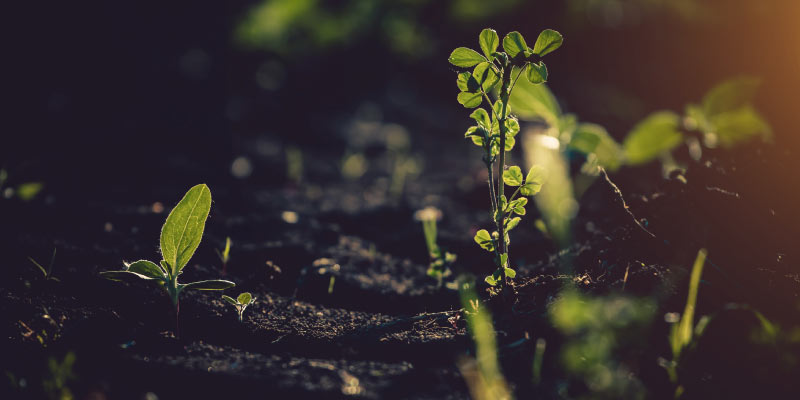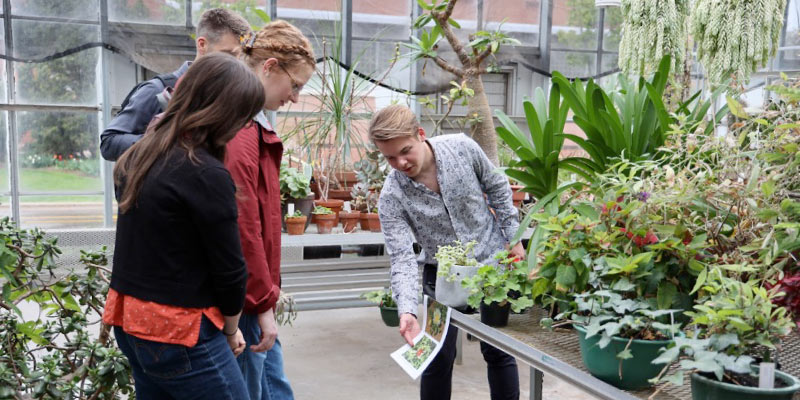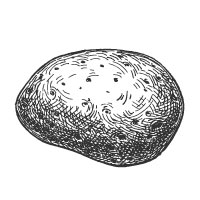
Nothing is more universal than the idea of the “end of the world.” From religious revelations to the yearly climate reports, the apocalypse always seems to loom just around the corner. While many of us tend to overthink the end times — whether by anxiously reading every news headline or by daydreaming about the ultimate survival base — we often overlook the one relationship that we’ve held since the very beginning: plants.
Humanity and plants share a long and interwoven history. We’ve found almost an infinite number of uses for them: from food to decoration, medicines to poisons. They’ve been our silent companions, through the bleakest days of humanity’s history to our greatest triumphs. And yet, we forget about them when thinking about the apocalypse. Which is baffling, considering plants on this earth have survived numerous extinction events in their past.
With the coming of Earth Fest 2025, the ongoing series “Plants for the Apocalypse,” hosted by the UW School of Pharmacy and Allen Centennial Garden, will return with a third installment at the D.C. Smith Greenhouse. While you’ll be interacting with this year’s apocalyptic plants on April 21, let us introduce you to five plants to keep in mind at the end of the world.
 Cattail
Cattail
Like many on this list, cattails represent many avenues of the apocalypse. Cattails are a familiar sight in wetlands. With their distinct cigar-shaped heads and tall, thick stems, they thrive in the damp marshes, ponds, and lakesides. They have a naturally rapid growth rate, and left unchecked, can overtake any marshland they choose, very reminiscent of a chaotic zombie outbreak. However, unlike the undead, cattails hold many benefits to their local ecosystem. According to the Cornell Cooperative Extension, cattails have a plethora of pros, such as providing habitat to a variety of birds and wetland critters, help trap sediments and prevent erosion, and even shown to remove pollutants through bioremediation. However, the problems start to arise when they start to become more prevalent.
Cattails can easily become a dense monoculture that can overpower native flora. This affects the fauna by eliminating sources of wildlife food like seeds and tubers. Particularly, it is the invasive hybrid that causes problems here in Wisconsin. Not only do they hide themselves looking like native cattails, they can easily outcompete the native and exponentially become a larger problem. And while they help with pollutants and heavy metals in the water, when they decompose, they produce 400 times the amount of Methane compared to conifers.
Cattails have the potential to be either a natural defense for wetlands or an invasive force to be reckoned with. The decision lies in how we choose to interact with them.
 Cannabis
Cannabis
It may sound unconventional to talk about cannabis due to its recreational use, but this plant’s medicinal and practical benefits could prove essential in times of crisis. Cannabis, particularly in its hemp form, has long been used for therapeutic purposes. Research institutions, like the Transdisciplinary Center for Research in Psychoactive Substances at UW–Madison, continue to explore cannabis’s potential — alongside other psychoactive substances such as MDMA and psilocybin — in treating mental health conditions such as depression, PTSD, and anxiety. These benefits could be crucial in an apocalypse where psychological stress and trauma are likely to escalate.
Beyond its psychological applications, cannabis could also serve more physical purposes. The plant’s strong fibers can be turned into rope, fabric, and even building materials. Cannabis is a versatile, resilient plant that could function as both a healer and a builder when the world begins to crumble.
 Milkweed
Milkweed
While mostly recognized for the beautiful monarch butterflies that use it for food, milkweed also has a long history alongside humans as well. Milkweed, with its nutrient flower buds, has been traditionally used by the Ho-Chunk both as food and medicine. The plant’s floss fiber has been used in strings, rope, and even clothes. During World War II, it was even used in life jackets due to its buoyant and water repellent nature.
However, milkweed serves another important purpose: indicators of a healthy habitat. One of the reasons milkweed has seen a decline in Wisconsin is due to extensive use of weed killers. The loss of the milkweed can be exacerbated by climate change, leading to many ecosystems losing a vital source of food and shelter. This leads them to be an indicator, acting as a signal for broader ecological issues, especially for pollinators like the monarch butterfly. Milkweed’s survival might be critical in assessing the health of the natural world as well as tracking the northern migration of plants.
 Fungi (cordyceps)
Fungi (cordyceps)
Here’s the funny thing about fungi: they aren’t plants! Evolutionary cordyceps — which include fungus and mushrooms — are more closely related to us than to the plants we tend to associate them with. Despite this, fungi play an essential role and connect to the wider conversation of what nature can provide for us.
Mushrooms, like the edible morels and chanterelles, can be easily foraged in the wild, and many other varieties have medicinal properties. For example, many Native American tribes across America, from the Cherokee to the Lakota, used puffball mushrooms to help heal sores and burns. While mushrooms can be healers, they have the potential to cause death and suffering as well.
Ergot, for example, is a fungus that grows on rye and wheat that can both be used in pharmaceutical settings as well as act as a poison. Ingesting ergot through infected food can cause ergotism or “Saint Anthony’s Fire,” which causes a wide range of symptoms: including hallucinations, convulsions, and gangrene, to name a few. The hallucinations are especially notable as it is hypothesized that the witch trials in Europe, as well as the Salem Witch Trials of 1692, was because of the neurological properties of ergotism. Considering that one of the products derived from ergot alkaloids is LSD, it’s not out of the realm for people to start seeing apparitional attacks and spectral visions of the dead. Ergot also has a widespread history with famine across the world. Epidemics of ergotism documented in the Middle Ages (500-1500 A.D) have resulted in the deaths of tens of thousands of people. As both a healer and a harbinger of death, fungi could be a powerful tool — or a deadly enemy — during the apocalypse.

 Potatoes
Potatoes
One of the most resilient crops today, potatoes not only are a staple food for billions of people but could be the perfect plant to rely on for when the apocalypse hits. In addition to being able to grow in a large variety of environments and climates (even can be grown indoors in minimal lighting environments), these tubers contain various essential vitamins, minerals, amino acids, and fiber. They also require less water and land than most other fruits and vegetables.
When analyzing the history of potatoes, the association they have to the one of the four horsemen- famine- due to the Irish potato famine in the 1800s. Over a million Irish citizens died due to an infection of P. infestans or blight. Potatoes also fueled the race for synthetic pesticides as Colorado potato beetles ravaged potato crops. This led growers in Long Island to start using calcium arsenate and, after World War II, move on to DDT. However, after every new pesticide, the next generation of beetles would develop an immunity, so a strong pesticide would be made. Now today, we can see how that “toxic mill” caused harm in the environment by contaminating waterways and ground soil.
Despite this past, if you’re looking for the best plant to grow in a survival shelter, look no further than the potato.
 Plan Ahead at Earth Fest
Plan Ahead at Earth Fest
Plants for the Apocalypse III
Monday, April 21 | 3:30–5 p.m.
Learn more